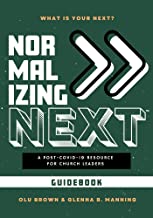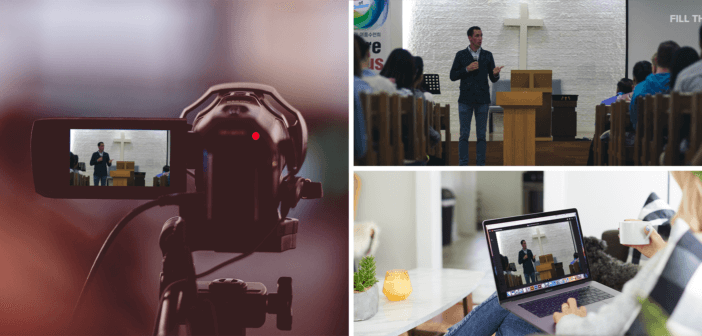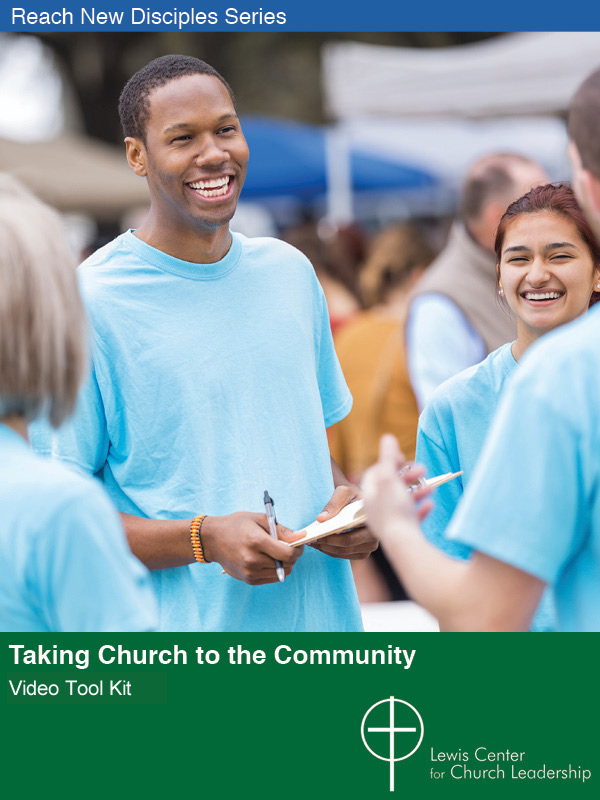Effective hybrid worship requires that churches ascribe high and equal value to in-person and online worshipers. Olu Brown outlines key steps a congregation should take to assure that their worship is accessible and welcoming to those not in the building.
Leaders in a post-COVID-19 world have the new challenge and opportunity of managing worship on dual platforms: virtual and in-person. Although many leaders are waiting for worship to return “as usual” and for people to reenter the church buildings, this hope may never be fulfilled. The hybrid approach of both platforms holds virtual and in-person worship with high and equal value. It emphasizes the need for investing in and creatively hosting both experiences of worship to reach people for Jesus Christ. To prepare for the necessary changes to church worship experiences, the following thoughts, questions, and ideas should help you and your church formulate a plan.
1. Communicate the need for change.
COVID-19 showed us that worship occurs in spaces beyond the church walls and the need to create new ways to do ministry. Determine for yourself or as a team how you can communicate with your congregation the need to change and the value of change. Ideas for doing this may include a sermon series on the changing nature of worship, conversations in the church administrative council, leadership teams, Bible study, or small groups on the reasons for worship and the call to “go and make disciples,” and surveying numerous resources for expert advice on leading change.
2. Evaluate your current worship services.
With or without a pandemic, all churches should actively evaluate and assess each element of their worship services on a regular basis. “We have always done it this way” is never a reason to continue to do anything related to worship. Each element of worship — service times, liturgy, responses, music (amount and message), bulletins, verbal announcements, human resources, flow, prayer, collections, sermon — should be evaluated for its relevance, purpose, authenticity, necessity, and contribution to the message and purpose of gathering. To assist in the evaluation, gather “fresh eyes” to be a part of your worship services. These new eyes may be new members, visitors, trusted individuals, or consultants you invite in to help give a critical look at what you are doing. Be prepared to receive their comments not as criticism but with a new awareness of the perceptions of others in your services.
3. Enhance in-person worship for hybrid worship.
Congregations moving from in-person worship to recording the worship services for later streaming or concurrent streaming of the service over a media platform must recognize that changes to the in-person service will need to occur. The following are elements of in-person worship that may need to look and sound different for streaming:
- Be aware of limitations in lighting and in audio. What looks and sounds good in person, may not translate well across various platforms. Check for shadows, glares, background noises, volume, etc.
- Be aware of speaking to multiple audiences. As you speak to the people gathered, recognize that you are speaking to those gathered in person and to those who have chosen to gather through a streaming platform for they are an equally important part of your congregation. For example, in your welcome to worship, be sure to acknowledge those watching online. If possible, give them a way to “sign in” to worship, offer their prayer concerns, or offer ways in which to contribute to the church through gifts and service.
- Be sure to reference your website or email address so that persons watching through a streaming platform can reach out to your church for more information or to learn more about the service and growth opportunities available to them.
- Be aware of “lag times” in worship or what may be known as “dead air.” Those in attendance can see people moving to platforms or pulpits or into position, but to the online audience, it is dead air space. An example may be the offering collection. In in-person worship, there is usually music playing as the plates are passed. For the online viewer, this can be dead air space.
- Be aware that your service is being sent over social media platforms; therefore, be sure that information shared, particularly in prayer concerns, is information that does not violate or endanger personal privacy. For example, if you announce prayers of sympathy for Betsy Smith whose husband has just passed, you have let the world know that Betsy is now a vulnerable widow. Instead, you may ask people to share their prayer concerns and then determine a private way to share those concerns with your prayer team and congregation.
- Be aware of insider language that may be unclear to online viewers. For example, if you announce you are having an event in the FLC or you are taking up a special offering for KARM, an online viewer may not know these acronyms.
As we move into a new age in the post-COVID-19 world with changes in many facets of work and family life, the church also must evolve the ways in which it interfaces with its congregation and the community beyond the church walls in order to continue its mission and vision of reaching people for Christ.
 This material is adapted from Normalizing Next: A Post COVID-10 Resource for Church Leaders(Culverhouse LLC, 2022) by Olu Brown. The book is available at Amazon.
This material is adapted from Normalizing Next: A Post COVID-10 Resource for Church Leaders(Culverhouse LLC, 2022) by Olu Brown. The book is available at Amazon.
Related Resources
- 5 Dos and Don’ts to Make the Most of Your Digital Worship by Tim Snyder
- Preaching Strategies for a Post-Pandemic Church by Michael Adam Beck And Rosario Picardo
- Imagining a Hybrid Future, in in-depth interview with Rosario Picardo







